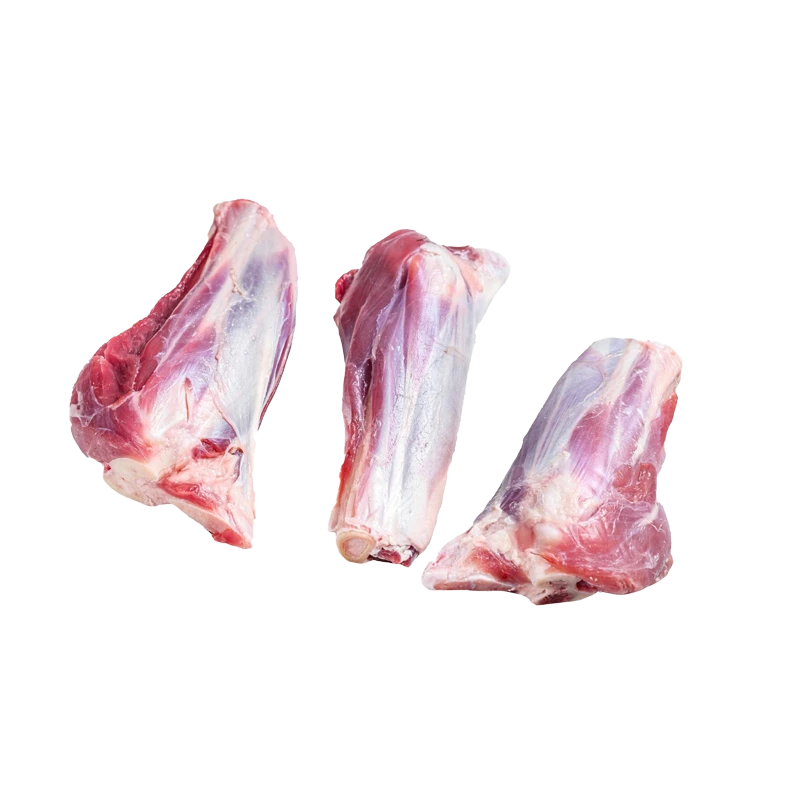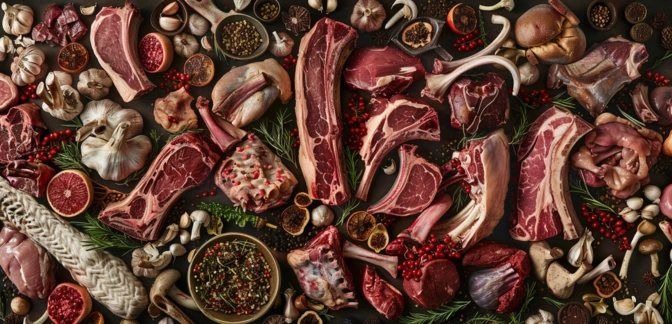Lamb Shanks — Nutrients, Health Benefits, And Shopping Tips

Written by Listonic Team
Last update on September 4, 2024
Nutrition facts
Nutrition facts
Amount per 100 g
Calories
🔥 184 kcal
| Nutrition per: 100 g | Value | % Daily Value* |
|---|---|---|
| Carbs | 0 g | - |
| Fiber | 0 g | - |
| Sugars | 0 g | - |
| Glycemic Index | 0 | - |
| Protein | 31 g | 62% |
| Sodium | 100 mg | 4.35% |
| Total Fat | 6 g | 7.69% |
*The % of Daily Value (DV) tells you how much a nutrient in a serving of food contributes to a daily diet. 2,000 calories a day is used for general nutrition advice.
31 g
💪 High Protein Content
Did you know?
Health benefits
- High in protein, essential for muscle growth, repair, and overall body function.
- Rich in collagen, which supports joint health and skin elasticity.
- Contains essential vitamins and minerals such as Vitamin B12, zinc, iron, and selenium, which support energy metabolism, immune function, and overall health.
- Provides healthy fats, supplying energy and supporting cell function.
Health risks
- High fat content particularly in the meat and bone marrow, which can raise cholesterol levels and increase the risk of heart disease when consumed frequently.
- High calorie content which can contribute to weight gain if consumed in large quantities or as part of a calorie-dense meal.
- Risk of contamination with harmful bacteria such as Salmonella or E. coli, particularly if the lamb shanks are not properly cooked to a safe internal temperature.
- Potential for high sodium content in prepared or processed lamb shanks, which can contribute to hypertension and increased cardiovascular risks.
How to choose lamb shanks
Lamb shanks are best when they have a robust red color and are covered in a thin layer of fat. The texture should be dense, indicative of the collagen-rich connective tissue that makes this cut ideal for slow cooking.
Avoid lamb shanks that appear dry or have discolored spots, as these can result in tough, flavorless meat. Properly prepared lamb shanks will be succulent and flavorful, perfect for braising or stewing.

How to store lamb shanks
Lamb shanks should be refrigerated as soon as possible. Store them in their original packaging or an airtight container to keep them fresh. Properly stored, lamb shanks are ready for cooking delicious meals.
Exposing lamb shanks to room temperature for too long can cause spoilage. Avoid refreezing thawed lamb shanks to maintain their tenderness. Consistent refrigeration helps preserve their rich flavor and ensures safe consumption.
✅ Extra Tip
How long do they last?
Lamb shanks can last for 1-2 days in the refrigerator. For longer storage, lamb shanks can be frozen for up to 6-9 months. Proper packaging, such as vacuum-sealing, helps maintain their quality over longer storage periods.
What to do with leftovers?
Leftover lamb shanks can be used in a variety of rich and hearty dishes. Shred the tender meat and add it to soups or stews for added depth and flavor, or use it in a shepherd’s pie with mashed potatoes on top. Lamb shanks are also great when mixed into a pasta dish with a tomato or red wine sauce.
Use the shredded meat from lamb shanks in a casserole with root vegetables and herbs, or mix it into a stir-fry with vegetables and rice. If you have a lot of lamb shank meat, consider making a batch of lamb tacos with fresh salsa and avocado, or using it in a lamb curry with coconut milk and spices. Lamb shanks can also be served with a side of roasted vegetables or used as a filling for savory pies. For a quick snack, reheat the lamb shank meat and serve it with flatbread and a yogurt-based dipping sauce.
👨⚕️️ Medical disclaimer
Discover products from other categories
Listonic Team
Fact-checked
Our editorial team checked this article to make sure it was accurate at the time of publishing it.
Get the top-rated shopping list app on your phone!







